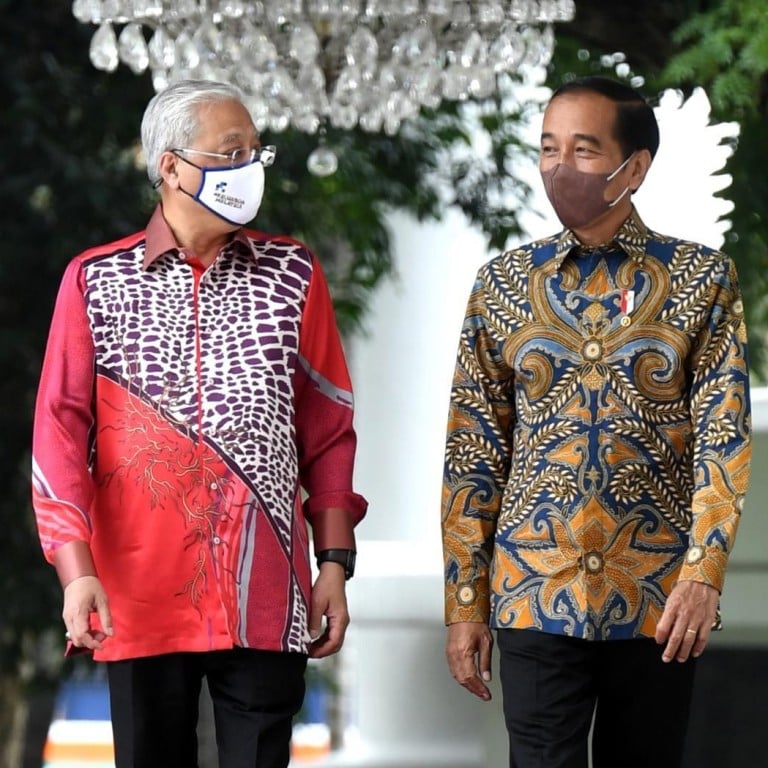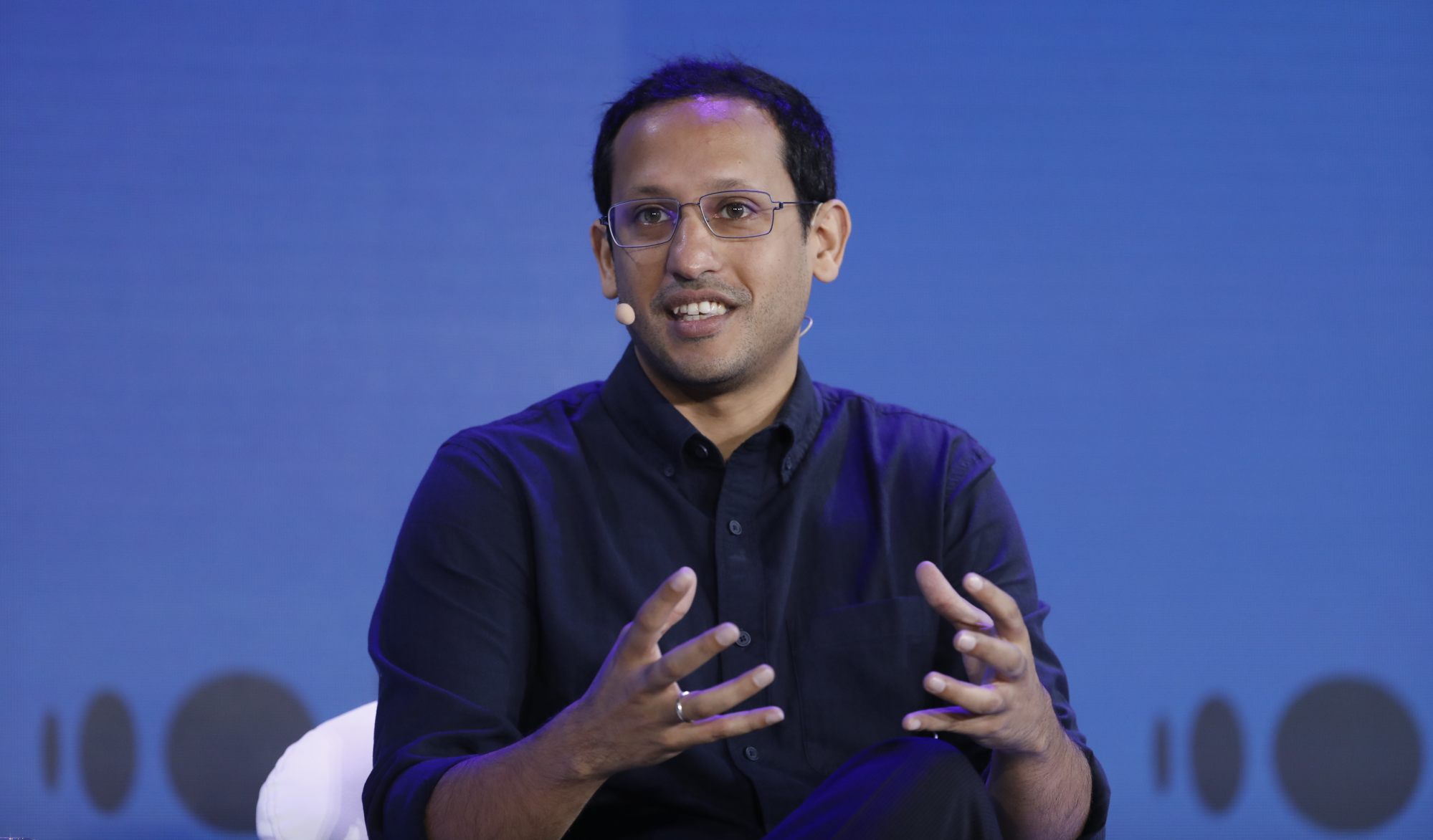
Malaysia’s call for Asean to embrace its national language irks critics and Indonesia
- PM Ismail Sabri says there are many native speakers across Southeast Asia, a position that views all Malay languages as essentially the same and one that Indonesia disagrees with
- His campaign has prompted criticism on his political priorities, suggestions he is trying to cover up his lack of confidence in English, and accusations of pandering to Malay voters ahead of an election
“There is no reason for us to feel awkward speaking in Bahasa Melayu in other countries, when others are proud of using their national languages,” he said after the trip, using a catch-all term for the Austronesian language that is spoken in different forms across the region, from Malaysia to Indonesia, Singapore, Brunei and parts of East Timor and Thailand. In Malaysia, the terms Bahasa Melayu and Bahasa Malaysia are used interchangeably to refer to the Malay language.

Since his Bangkok trip, Ismail Sabri has doubled down on his ambitions for Malay. Addressing the country’s upper house on March 23, he noted that there were native Malay speakers in at least eight of Asean’s 10 member states.
This was reason enough to make Malay the second official language of the bloc, Ismail Sabri suggested. “There is no reason why we cannot make Malay one of the official languages of Asean,” he said, adding that he would float the idea to countries that already used Malay as a working language.

Fighting talk
The leader’s remarks have elicited raised eyebrows at home, with critics questioning his interest in the matter at a time Malaysia was experiencing economic stress and other significant challenges.
The issue gained further prominence this week after Nadiem Makarim, Indonesia’s Minister for Education, Culture, Research and Technology, weighed in on the matter.
Nadiem, the co-founder of the Indonesian super-app Gojek, said in a statement on Monday that it was Bahasa Indonesia that was better suited to be an Asean language.
“With all the eminence possessed by Bahasa Indonesia from the aspect of legal history, and linguistics, it is appropriate that it sits in the leading position,” he said.
Nadiem highlighted that the Indonesian language had spread to more than 47 countries, with the teaching of the language being facilitated by over 428 bodies worldwide, both governmental and private.
“I urge the entire community to work hand in hand with the government to continue to empower and defend the Indonesian language,” he said.
In graphics: a world of languages - and how many speak them
While both languages stem from the same Austronesian roots, they evolved differently, with Bahasa Indonesia influenced by the Dutch language spoken by Indonesia’s former colonial rulers, while Malay was influenced by English. Malaya, the antecedent state to Malaysia, was governed for more than a century by the erstwhile British Empire.
In Malaysia, the common view is that both languages are essentially the same.
Bahasa Malaysia, which is taught in national public schools, is seen as the root language from which “dialects” – including Bahasa Indonesia – originate, much like the connection between Metropolitan French and Quebecois French, or European Portuguese and Brazilian Portuguese.
Awang Sariyan, who chairs the board of the country’s governing body for the use of the Malay language, told This Week in Asia there was no controversy or dispute in the Malaysian perspective on the matter.
He said the Malay language was represented by the respective local “dialects” in the different countries. In Indonesia, he noted that in the years before the country gained independence the current lingua franca was referred to as “Melajoe”, utilising Dutch phonology.
Indonesia, however, views its language as a distinct and modern evolution of the Malay language, as well as an important aspect of its status as an independent nation. The country’s founding figures pledged to form one nation of one people, with Bahasa Indonesia as its unifying language in the cornerstone Youth Pledge of 1928.
Why do Indonesians use English to talk about the Chinese?
Endang Aminudin Aziz, a linguist at Indonesia’s National Agency for Language Development and Cultivation, noted that in Indonesian parlance, “Bahasa Melayu” strictly referred to the regional language of the Riau islands close to the Malaysian Peninsula, whereas Bahasa Indonesia was a national language.
“Even the Malay language in the Riau islands has absorbed many Indonesian vocabularies,” Endang was quoted as saying by the Indonesian news agency Detik.
Noting this line of thinking, sociologist Awang Azman Awang Pawi from Universiti Malaya told This Week in Asia that he believed Ismail Sabri’s vision was one that referenced “Malay” as the root language shared by the various countries, including Indonesia and Brunei, rather than Bahasa Malaysia per se.
“It is not the Malay language of Malaysia, but a common Malay language that is broadly understood among the people of Malaysia, Indonesia, and Brunei,” said Awang Azman.
He noted that the linguistic community of the three nations had had close cooperation since 1972 with the formation of Majlis Bahasa Brunei-Indonesia-Malaysia – Language Council of Brunei-Indonesia-Malaysia – which was formed to plan and monitor the development of the Malay language in the region.

Aside from Ismail Sabri, the idea is also being championed by his foreign minister Saifuddin Abdullah, who informed parliament on March 24 that the prime minister intended to speak Malay both at the Asean summit and the UN General Assembly later this year.
“We see that leaders from other countries who attend major conferences are also speaking in their national language, so we do not need to feel awkward,” Saifuddin said.
Baybayin, an ancient Philippine alphabet, is making a comeback
To prove his resolve, the minister said on Facebook later that he had written to US State Secretary Antony Blinken in Malay, in the first official international diplomatic correspondence using the language.
While it is common for leaders to speak their national language in an international forum, analyst Oh Ei Sun said English was still the working language for most conferences, and those who spoke through interpreters did so with a handicap.
“Undeniably, it is very difficult for delegates who do not speak English to exert a commanding or even convincing presence on such occasions, especially if the delegates are not from some major countries such as China, Japan or Germany,” Oh said.
This was due to the nuances of their content inevitably being lost in translation, he said. “This is perhaps why only those who really cannot muster English would prefer to use their national languages.”

Words of caution
Meanwhile, detractors of the prime minister have suggested the Malay language push is more self-serving, suggesting the prime minister is less fluent in the global language than his colleagues and predecessors.
Others have perceived the language promotion as a populist move ahead of the next election, with former Youth Minister Syed Saddiq Syed Abdul Rahman saying he was viewing the issue with a “slight suspicion”.
“I worry that these gestures are merely token steps for the purposes of rallying up support in an election year, without an actual vision or philosophy for language in a complex country like Malaysia,” said Syed Saddiq, a prolific English debater prior to his jump into politics.
Malaysia’s new DAP leader hopeful voters reject Najib, ethnic ‘zero-sum game’
In Malaysia, where identity and race play a big role in politics, 60 per cent of votes come from the Malay-speaking majority.
Syed Saddiq, the country’s youngest MP, also pointed out that more than championing any particular language, it was the government’s job to equip its people with the best tools to export innovative ideas, solutions and goods efficiently to the rest of the world.
He suggested for the government to look beyond ethno-nationalism and consider its multicultural diversity an asset for its success on the global stage, beyond the cliched tourism advertisement spots.
“An education policy that aims to ensure that all Malaysian students achieve proficiency in at least three Malaysian languages including Bahasa Malaysia and English is crucial to breaking down walls and building bridges between communities in Malaysia,” Syed Saddiq said.

Awang Sariyan, one of Malaysia’s pre-eminent Malay language advocates, meanwhile said he hoped the prime minister’s vision would be viewed in the right spirit across the “Malay world”.
“We should not allow the name differences, and differences that exist in certain cases, to extinguish the vision to elevate the regional language to become the official language of the Asean regional alliance,” the professor said. “Nor should the ambition be used as a competition or race between countries.”

